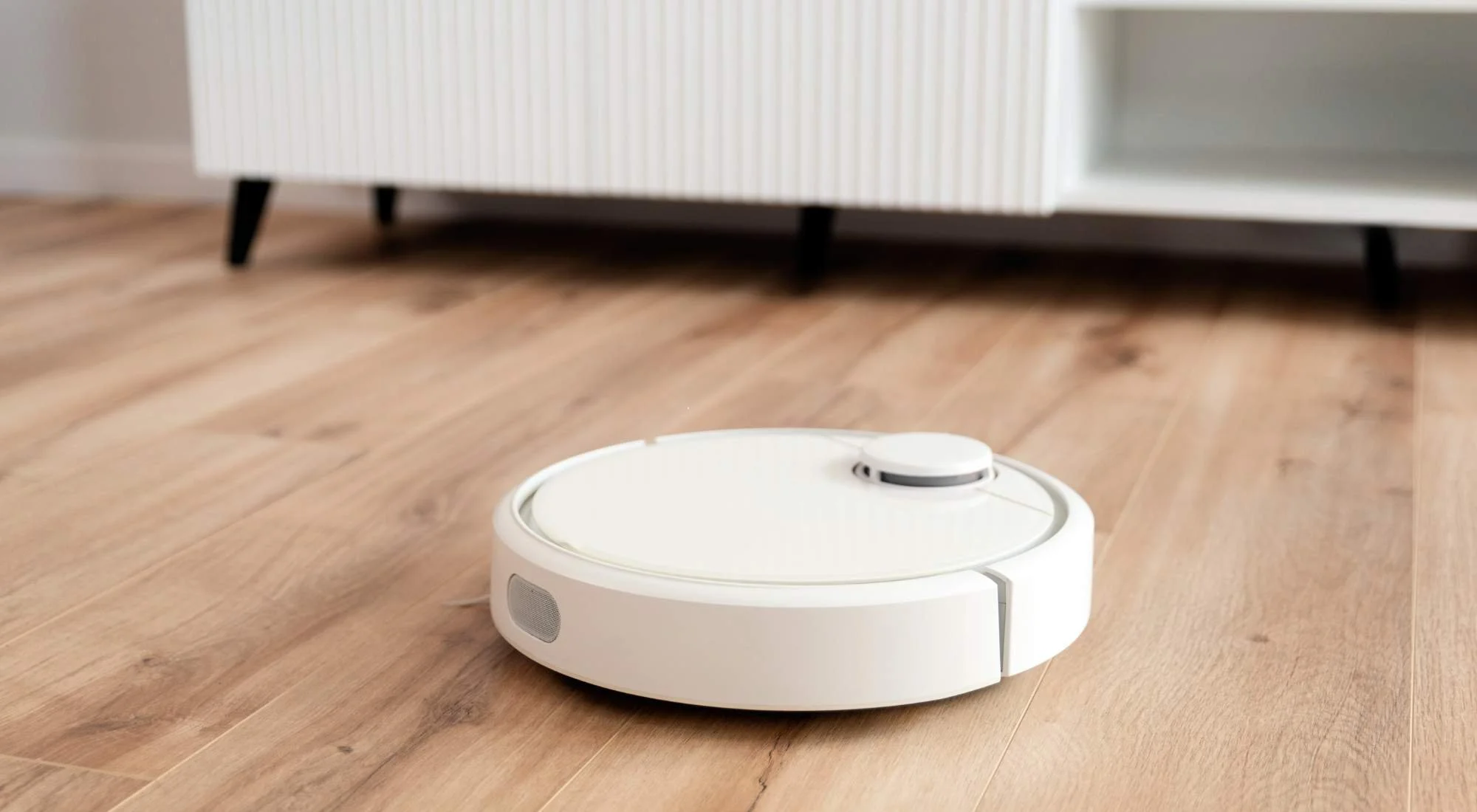From Carpets to Pet Hair: How To Find Your Ideal Vacuum Cleaner
You’ve just spilled a mountain of cereal across your kitchen floor, and your old vacuum wheezes like it’s run a marathon, leaving billions of crumbs clinging to the carpet. Or maybe you’ve “repaired” torn vacuum cleaner hoses enough times that it now has more duct tape than the AC ducts under your house.
You’ve had it! It’s time to find a vacuum cleaner that’s going to suck up all the crumbs and hold up over time.
Obviously, you don’t have a winning streak when it comes to choosing vacuums, so you’re asking yourself, “How do I choose a good vacuum cleaner?”
Choosing the right vacuum cleaner can transform cleaning from a dreaded chore into a surprisingly satisfying ritual. With countless models, features, and claims promising the “cleanest home ever,” finding the perfect vacuum can feel like navigating a maze.
In this guide, we’ll help you cut through the noise by pointing out seven factors to consider when buying a vacuum. We’ll help you pick a vacuum that makes tidying up feel almost enjoyable.
How Do I Choose a Vacuum Cleaner? 7 Factors To Consider
Each person’s lifestyle and home cleaning needs vary, but one thing is true for everyone — floors get dirty and need to be cleaned at least periodically.
Whether you are retirees whose home experiences minimal traffic, or your home is like Grand Central Station with pets, kids, their friends, and regular visitors, everyone needs a vacuum to clean floors as often as necessary.
Maybe you need a simple battery-operated vacuum for small messes, or perhaps a robotic vacuum that’s constantly on the move is more suited to your busy home. Either way, choosing the right vacuum for your home and your needs can help you keep things tidy and leave your mind at ease.
Below, we’ll take a look at seven factors to consider when choosing which vacuum is going to serve you best.
#1: Your Cleaning Needs
Think about your particular cleaning needs when choosing a vacuum. Consider:
The size of your home
Types of flooring in your home:
Hardwood
Tile
Carpet
Rugs
Number of people in the home
Number of children in the home
Pets and shedding levels
Upholstery cleaning needs
Vacuuming frequency to meet your cleaning standards
And more
For a larger home with constant traffic, a heavy-duty vacuum or robotic model may meet your needs. However, for a smaller space with minimal traffic, a stick vacuum may be suitable. Have pets that shed? Consider a vacuum with brush-detangling technology to keep the hair and dander under control.
If dirty floors from constant traffic and pet hair are overwhelming you and keeping you from the peace of mind that comes with having a clean and organized home, call in the reserves at Tidy Up Portland!
We provide a variety of services to meet your particular needs. Do you need periodic help with deep cleaning? We can do that! Maybe you need a weekly full-home cleaning. We’ve got you covered.
Take a look at our Tidy Up Portland! services, get a quote, and book online today.
#2: The Different Types of Vacuums
Vacuums come in all shapes and sizes with varying capabilities. Consider the following types of vacuum cleaners and what they can do when making a vacuum purchase:
Stick vacuums – Stick vacuums are ideal for quick, everyday cleaning and easy storage.
Pros of stick vacuums:
Lightweight
Compact
Often cordless
Ability to convert between upright and handheld modes
Multiple attachments for versatile surface cleaning
Cons of stick vacuums:
Smaller dust collection bins
Reliance on battery power and charging
Upright vacuums – Upright vacuums are ideal for deep cleaning multiple rooms and are a must if you have children in your home.
Pros of upright vacuums:
Strong suction
Large capacity collection bins
Attachments for upholstery, curtains, stairs, etc.
Ability to convert between upright and handheld modes
Use in multiple rooms
Cons of upright vacuums:
May be difficult to maneuver
Noisier
Potential for limited mobility or tangled cords
Robot vacuums – This type of vacuum is perfect for the busy family who prioritizes order while allowing them to have a “set it and forget it” cleaning practice.
Pros of robot vacuums:
Mapping technology to avoid obstacles
Ability to set custom cleaning schedules
Automatically recharge
Self-emptying collection bins
Cons of robot vacuums:
Less suction power than traditional models
Hard to clean tight corners, stairs, or thicker carpets
Potential for limited mobility or tangled cords
#3: Filtration and Allergy Concerns
If air quality is a priority because of allergies or other respiratory issues, models equipped with True HEPA filters and sealed systems are especially effective at trapping allergens. Bagged vacuums often hold more debris and release less dust when emptied than bagless versions, providing a cleaner, more contained disposal process.
#4: Power, Suction, and Performance
When evaluating a vacuum cleaner’s performance, pay attention to suction power and airflow. Watts or amps only measure how much electrical power the motor uses, not how effectively the vacuum picks up dirt. Real performance comes from suction (measured as “water lift”) and airflow (measured in cubic feet per minute, or CFM).
For canister vacuums, look for at least 100 CFM or 90 inches of water lift for strong performance. Upright vacuums vary by design: “dirty air” models route debris through the motor and are usually rated only in amps, while “by-pass” models keep dust out of the motor and should deliver at least 60 CFM for efficient cleaning.
Suction power is especially important for carpets and pet hair removal and can also be expressed in air watts (AW) or pascals (Pa) — higher numbers generally mean stronger cleaning performance.
#5: Attachments and Special Features
High-quality vacuum cleaners often include a range of attachments that make cleaning easier, more efficient, and useful for different surfaces. While standard accessories handle most floors and above-floor areas, specialized tools can significantly extend your vacuum’s versatility and performance.
For example, flexible crevice tools reach behind furniture and into corners, while soft-bristle dusting brushes gently clean delicate items and high surfaces. Mini turbo brushes are especially useful for removing pet hair from furniture, stairs, and car interiors.
Common attachments include:
Pet hair tools
Upholstery brushes
Crevice tools (standard and flexible)
Dusting brushes
Extension wands
Cordless vs. corded options
Smart features (app controls, sensors)
#6: Weight, Maneuverability, and Noise
A vacuum’s weight and maneuverability are crucial factors, especially for multi-level homes or users who need to carry the unit up and down stairs. A lightweight, well-balanced design makes cleaning easier for everyone — especially seniors and kids. The ideal vacuum should glide smoothly across floors, pivot easily around furniture, and reach under low spaces without strain.
Noise is another important consideration when choosing a vacuum. Some models can be so loud that they make cleaning unpleasant, while others operate quietly enough to let you hear a phone ring or hold a conversation. Vacuum noise is measured in decibels (dB). For reference, consider this:
Everyday conversation is about 50 dB
A garbage disposal runs around 80 dB
A lawnmower can reach 100 dB
The quietest vacuums operate in the mid-60s, and those between 70–77 dB are still comfortable by modern standards. If you prefer a peaceful cleaning experience, look for models specifically rated for low-noise performance.
#7: Budget and Brand Reliability
No one wants to buy an appliance that’s going to break down after just a year — especially when you’ve spent more money on a higher-end model. Warranties can help with assurance that you’ll get your money’s worth, and choosing trusted brands versus trendy new ones can help get years of use out of your new vacuum.
Consider the following when considering cost and longevity:
Price ranges – Vacuum cleaners are available across a wide range of prices to suit different needs and budgets.
Entry-level models start around $65 and typically cover basic cleaning tasks with fewer features.
Mid-range vacuums, priced between $200 and $600, often include stronger suction, better filtration, and useful attachments for versatile cleaning.
Premium models, which can cost up to $1,600, deliver top-tier performance, advanced technology such as smart mapping or HEPA filtration, and sleek, durable designs that make cleaning easier and more efficient.
Longevity and warranties – On average, vacuum cleaners last about eight years, though lifespan can vary greatly based on the model, frequency of use, and maintenance. With proper care, a well-built vacuum can perform effectively for 8 to 12 years. A good warranty reflects the manufacturer’s confidence in its product. Look for warranties that:
Extend beyond the motor
Provide clear instructions for claims
Offer reasonable coverage for parts and service
Trusted brands – Several reputable brands have earned strong reputations for reliability, innovation, and performance. Among the most trusted names are:
Levoit
Shark
Narwal Robot
Eureka
Bissell
Miele
Dyson
Focus on Living, Not Vacuuming — We’ll Take Care of the Rest
Whether it’s regular vacuuming, deep cleaning, or maintenance services, Tidy Up Portland! is here to help keep your home clean and comfortable, so you can get on with life and all the things that bring fulfillment and joy.
Why choose Tidy Up Portland! over the other options available?
We offer a variety of services to meet your needs.
Special packages give your home a reset before starting ongoing cleanings.
Maintenance cleaning packages are weekly, biweekly, monthly, or one-time options to maintain a clean and spotless home.
Tidy Up packages — available as add-ons to a Maintenance package — help tidy your home after the morning rush, straightening and restoring order to your space.
Deep cleaning packages include cleaning on a quarterly basis to keep and include detailed cleaning throughout your home.
We’re experienced, and we’ve cleaned more than 10,000 homes.
We have a 5-star reputation — check out our reviews — and offer a 100% guarantee.
Let us know what you want, and we’ll provide a quote.
Booking is easy online.
We prioritize green cleaning with eco-friendly products.
We can’t wait to start working for you! Contact us today to schedule a walkthrough, get a quote, and schedule your first cleaning.



